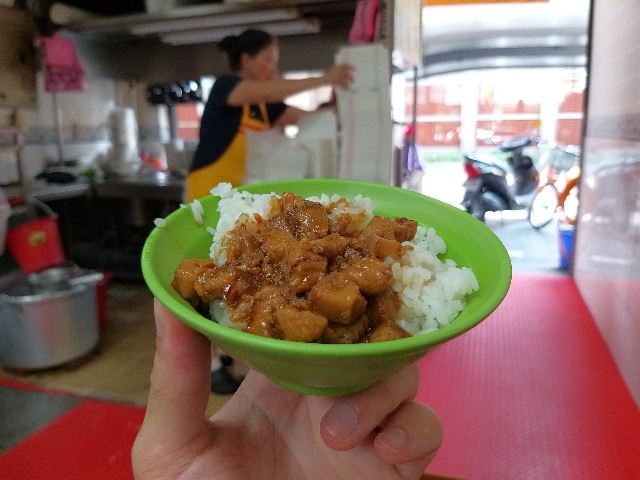Recently, I embarked on a 400km cross-country drive from Taitung to Taipei in Taiwan. During this journey, I realized that Taiwan’s traffic conditions differ significantly from what I was accustomed to. While the route may look simple on a map, there are various important considerations when actually driving.
In this article, I’ll share the unique traffic conditions in Taiwan and key points for safe driving based on my personal experience.
Previous article here
1. Essential Basics: International Driver’s Permits Are Not Valid!

While international driver’s permits are accepted in many countries, they cannot be used in Taiwan. You need your original driver’s license from your home country along with a Chinese translation of that license. I had my translation prepared by JAF (Japan Automobile Federation), and without it, you cannot rent a car at all. Remember this as an essential preparation item before your departure.
2. Left-Hand Drive, Right-Side Traffic: Surprisingly Adaptable

Pre-harvest rural landscape in Chishang, Taitung County
Taiwan uses left-hand drive vehicles and right-side traffic. This is the opposite of some countries like Japan and the UK, but surprisingly, you get used to it after driving for a few hours. However, be especially careful of blind spots when turning right. While you’re still getting accustomed, make thorough safety checks.
3. Bring Your Own Navigation: Prepare Your Smartphone
Rental cars in Taiwan generally don’t come equipped with GPS navigation systems. I was initially surprised by this fact, but when I asked locals, I learned that everyone uses Google Maps on their smartphones. I quickly purchased a smartphone holder and decided to use both Google Maps and Maps.me apps. Maps.me, which works offline, proved to be a valuable companion in mountainous areas.
4. Strict Speed Enforcement: Beware of Speed Traps

Taiwan’s enforcement of speed limits is extremely strict. During our trip, we witnessed multiple cars getting flashed by speed cameras on the highway. If you violate the speed limit, the fine will be charged to your credit card through the rental car company at a later date. Speed can increase naturally on downhill sections, so I recommend using cruise control when available.
5. Street Parking Risks: Safety Comes from Using Proper Parking Lots
Online, you might read that “street parking on white lines is OK in Taiwan,” but the reality isn’t that simple. When we tried to park on the street in Hualien, a store owner warned us that “parking isn’t allowed here.” Additionally, areas that appear suitable for parking may have time-specific restrictions.
My conclusion is to use designated parking lots, even if they’re a bit farther away. This is especially important in tourist areas to maintain good relationships with local residents.
6. Watch Out for Unexpected Road Closures: Information Gathering is Crucial

From the Provincial Highway Real-time Information Service Network
This is a particularly important point. Unexpected road closures frequently occur in Taiwan’s mountainous areas, especially on Highways 8 and 9. During our trip from Hualien to Luodong, we encountered a traffic restriction zone. Fortunately, we had checked the information in advance on the “Provincial Highway Real-time Information Service Network” and were able to pass through during unrestricted hours. If you neglect to gather this information, you might be forced to take significant detours.
Be especially cautious during the rainy season or after typhoons. Landslides frequently cause road closures. Make it a habit to check the latest road information regularly.
7. Unexpectedly Narrow Roads: Mountain Driving Skills
Roads leading to popular tourist destinations like Jiufen and Shifen are surprisingly narrow. What was particularly nerve-wracking was passing oncoming vehicles. To make matters worse, tourists often overflow onto the roads, making for a truly nerve-racking driving experience.
In these areas, avoid excessive speed and drive slowly. Also, be prepared for the possibility of having to reverse to allow other vehicles to pass, and familiarize yourself with the car’s handling beforehand.
8. The Sea of Scooters: 360-Degree Awareness Required

Scooters weaving through traffic from left and right
The most shocking aspect of Taiwan’s road conditions was the sheer number of scooters. Especially in downtown Taipei, it feels like an ocean of scooters. They cut in from both sides of your car with unpredictable movements, requiring constant 360-degree awareness.
In areas with many scooters, I made it a point to minimize lane changes and maintain a constant speed as much as possible. It’s important to avoid sudden movements and always remain alert to anticipate scooter movements.
9. Aggressive Driving Culture: Maintain Your Composure

Rush hour traffic conditions in Kaohsiung
Taiwanese drivers’ behavior might seem quite aggressive to those from countries with more orderly traffic. Extreme tailgating and sudden lane changes without signals are not uncommon—behaviors that would be considered unacceptable in many other countries.
In these situations, I focused on not overreacting and maintaining a safe following distance. However, leaving too much space invites other cars to cut in, so a proper balance is necessary.
10. Enjoying Scenic Views Safely: Tourist-Friendly Driving
The views from Taiwan’s roads are truly magnificent, especially along the east coast. However, it’s extremely dangerous to be distracted by scenery while driving. We made it a point to regularly stop at safe locations to enjoy the views. Rest areas along the road are particularly recommended. Taiwan has many scenic rest spots, so make good use of them.

The area around Chongde Tunnel offers one of Taiwan’s best scenic views. A must-visit if you’re traveling by car.
Conclusion
Driving in Taiwan can be challenging due to unfamiliar traffic rules and unique driving cultures, but it can also be a wonderful experience. With proper preparation and correct knowledge, you can fully enjoy your journey.
I hope these tips help you have a safe and enjoyable driving experience in Taiwan.





